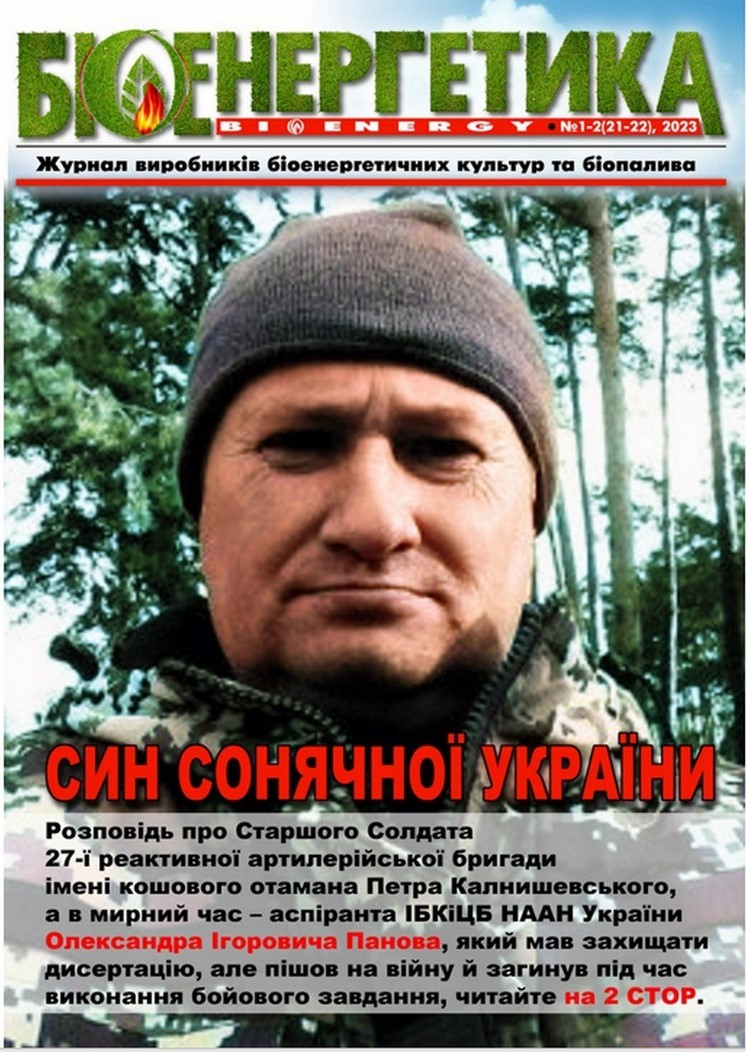Вплив виду садивного матеріалу на ефективність створення насаджень тополі в умовах Правобережного Лісостепу
DOI:
https://doi.org/10.47414/be.1-2.2023.290637Ключові слова:
лісопольові угіддя; енергетичні рослини; Populus × euramericana; саджанці; приживлюваність; середня висотаАнотація
Мета. Встановити особливості росту енергетичної плантації тополі сорту ‘Robusta’ на вилугуваних чорноземах в умовах Центрального Лісостепу України.
Методи. Польовий, лабораторний, статистичний.
Результати. Кліматичні зміни актуалізують необхідність переходу аграрного бізнесу України до агролісівничих систем не тільки у степових, а й у більш північних регіонах країни. Мета досліджень — вивчення особливостей створення полезахисних насаджень тополі (Populus × euramericana) в Центральному Лісостепу України. Встановлено, що ефективним способом підвищення показників приживлюваності однорічних живцевих саджанців сортів тополі ‘Dorskamp’, ‘Robusta’ та ‘І‑45/51’ є їх висаджування без стовбурів. У всіх досліджуваних сортів протягом перших двох років вища приживлюваність саджанців була у варіанті без стовбура — від 57,0 до 68,9%, тоді як у саджанців зі стовбуром — від 50,3% до 68,1%. У 2022 р., завдяки проведеному поливу, приживлюваність становила від 74, 4% до 88,9%. Середня висота переважно теж була вищою у рослин, що виросли із саджанців без стовбура. Найбільшою вона виявилася у рослин клону ‘Dorskamp’ — 188,6 до 209,3 см. У необрізаних рослин цього сорту вона становила від 174,0 до197,2 см. Розпочаті дослідження доцільно продовжити з метою виведення нових форм тополі та удосконалення технологій створення лісопольових угідь за їх участі, які можуть бути використані в умовах Полісся і Лісостепу.
Посилання
Ansari, J., Udawatta, R. P. & Anderson, S. H. (2023). Soil nitrous oxide emission from agroforestry, rowcrop, grassland and forests in North America: a review. Agroforest Systems https://doi.org/10.1007/s10457–023–00870-y
Augère-Granier, M. L. (2020). Agroforestry in the European Union. policycommons.net
Báder, M., Németh, R., Vörös, Á. et al. (2023). The effect of agroforestry farming on wood quality and timber industry and its supportation by Horizon 2020. Agroforestry Systems. 97, 587–603 https://doi.org/10.1007/s10457–023–00812–8
Bayala, J., Prieto, I. (2020). Water acquisition, sharing and redistribution by roots: applications to agroforestry systems. Plant Soil 453, 17–28 https://doi.org/10.1007/s11104–019–04173-z
Burgess, P. J., Rosati, А. (2018). Advances in European agroforestry: results from the AGFORWARD project. Agrofor Syst 92:801–810. https://doi.org/10.1007/s10457–018–0261–3
Fahad, S, Chavan, S. B., Chichaghare, A. R., Uthappa, et al. (2022). Agroforestry systems for soil health improvement and maintenance. Sustainability 14:14877. https://doi.org/10.3390/su142214877
Fuchylo, Ya. D., Ivaniuk, I. D. & Bordus O. O. (2022). Some peculiarities of planting of poplar cutting seedlings growing on leached chernozem of the Right-Bank Forest-Steppe of Ukraine. Scientific Bulletin of UNFU, 32(3), 20–25. https://doi.org/10.36930/40320303
Fuchylo, Ya. D., Sinchenko, V. M. Hanzenko et al. (2018). Methodology for studying of energy plantations of willow and poplar. Kyiv: Komprynt. [in Ukrainian].
Kovács, K., Vityi, A. (2019). How can agroforestry improve the success of afforestation and contribute to meeting the growing demand of wood? In: Czupy I (ed) Exceeding the vision: forest mechanisation of the future. Proceedings of the 52nd international symposium on forestry mechanization. University of Sopron Press, Sopron, Hungary, pp 606–612
Moreno, G., Aviron, S., Berg, S., Crous-Duran, J. et al. (2018). Agroforestry systems of high nature and cultural value in Europe: provision of commercial goods and other ecosystem services. Agrofor Syst 92:877–891. https://doi.org/10.1007/s10457–017–0126–1
Mosquera-Losada,, M., Moreno, G., Pardini L. et al. (2012). Past, Present and Future of Agroforestry Systems in Europe. http://www.agroof.net/agroof_ressources/documents /201210_eu_agroforesterie pdf.
Nicolescu, V.-N., Rédei, K., Vor, T., Bastien, J.-C. et al. (2020). A review of black walnut (Juglans nigra L.) ecology and management in Europe. Trees 34:1087–1112. https://doi.org/10.1007/s00468–020–01988–7
Sharma, N., Singh, R. (2012). Dry Matter Accumulation and Nutrient Uptake by Wheat (Triticum aestivum L.) under Poplar (Populus deltoides) Based Agroforestry System. Agronomy. 2012. Article ID359673. 1–7.
Szigeti, N., Vityi, A. (2019). Soil moisture and temperature characteristics in a young silvoarable agroforestry system. Reg Bus Stud 11(1):21–27. https://doi.org/10.33568/rbs.2399
Yukhnovsky, V. Yu., Gladun, G. B., Sovakov, O. V., Lobchenko, Н. O. (2019). The current state, problems and prospects for the development of agroforestry in Ukraine. Forest reproduction and forest reclamation in Ukraine: origins, current state, current challenges and prospects in the conditions of the Anthropocene: a monograph / by general. ed. prof. Nikolayenko S. M. Kyiv: Lira-K, 2019. 269–283 [In Ukrainian].

